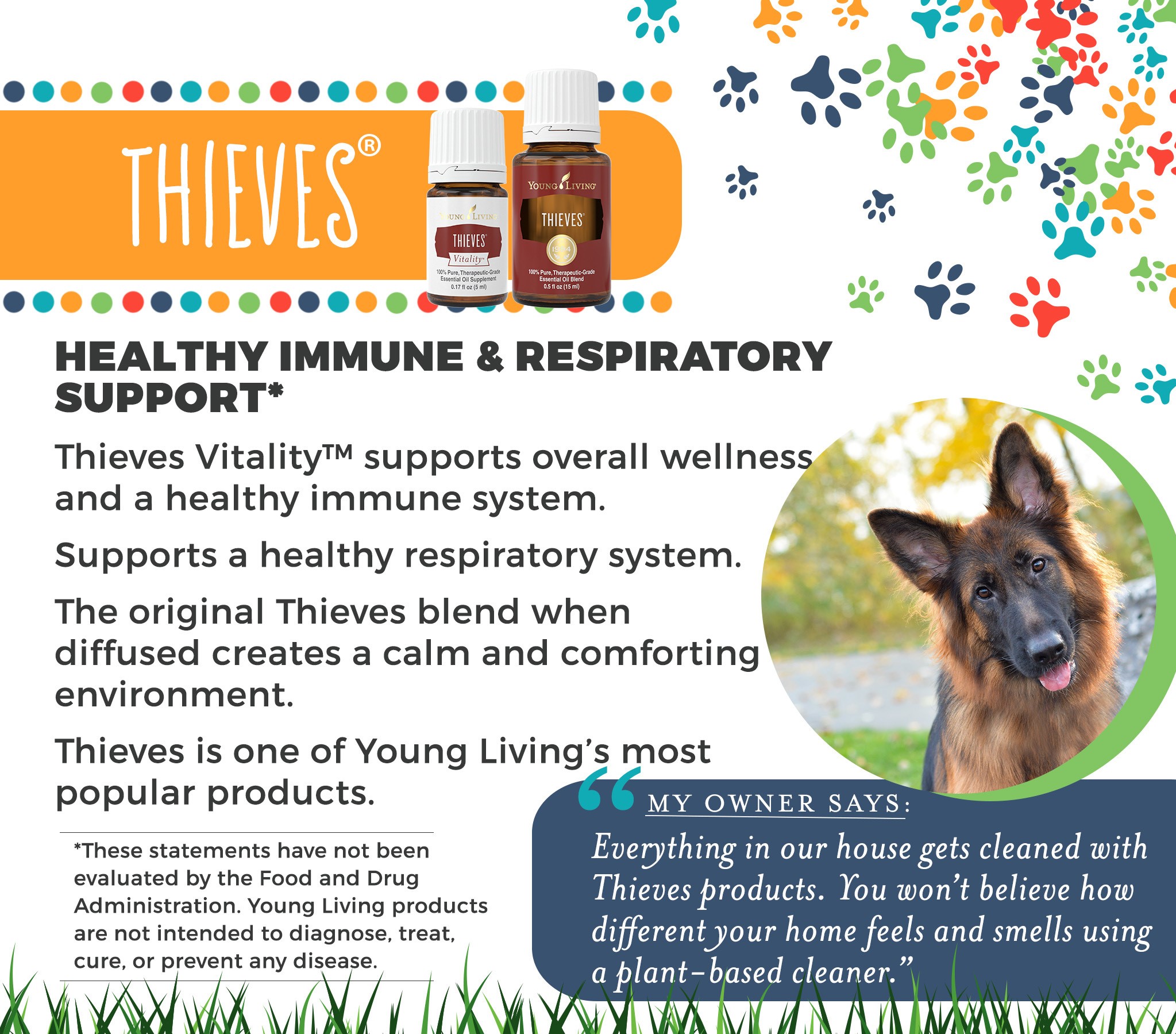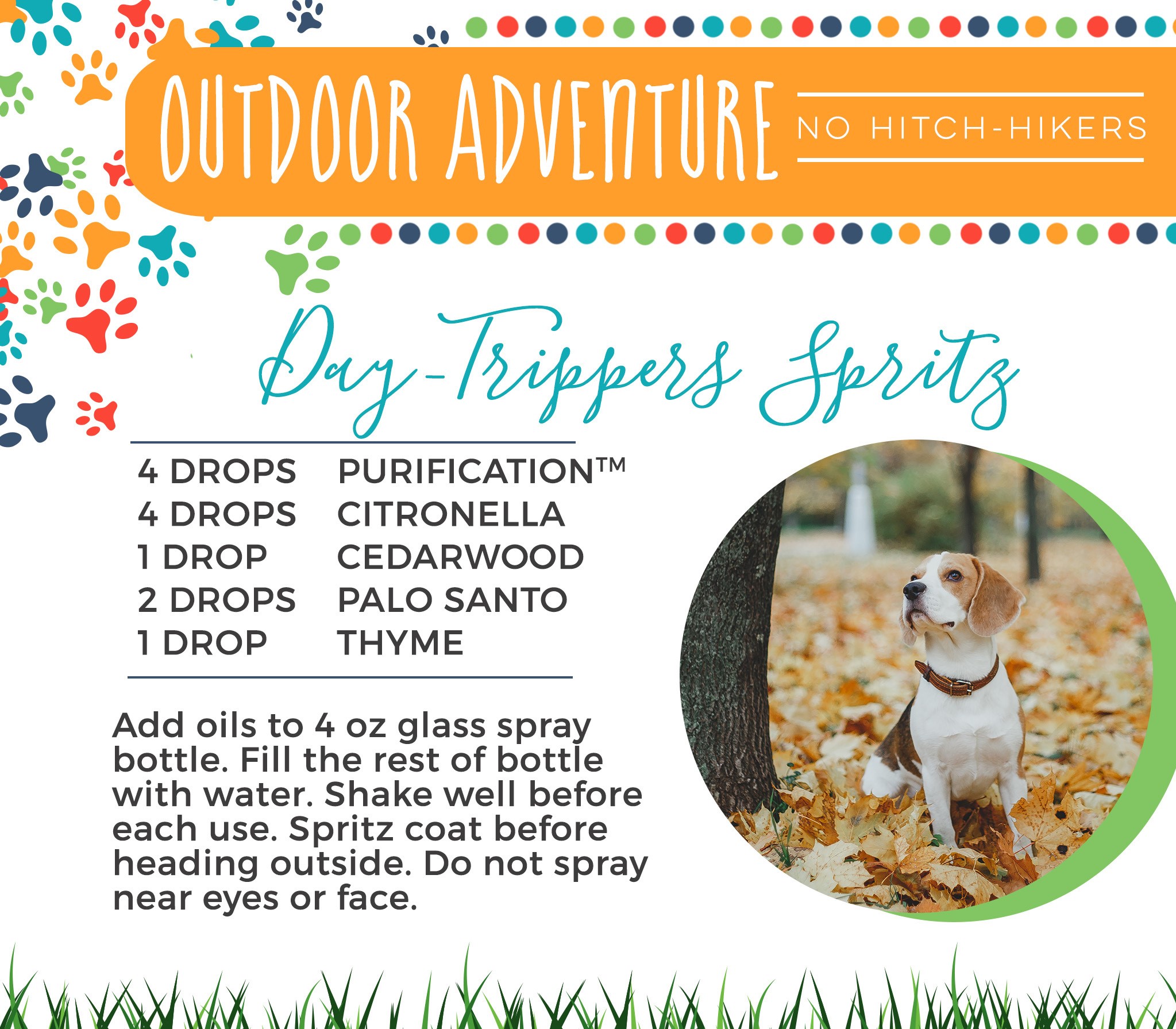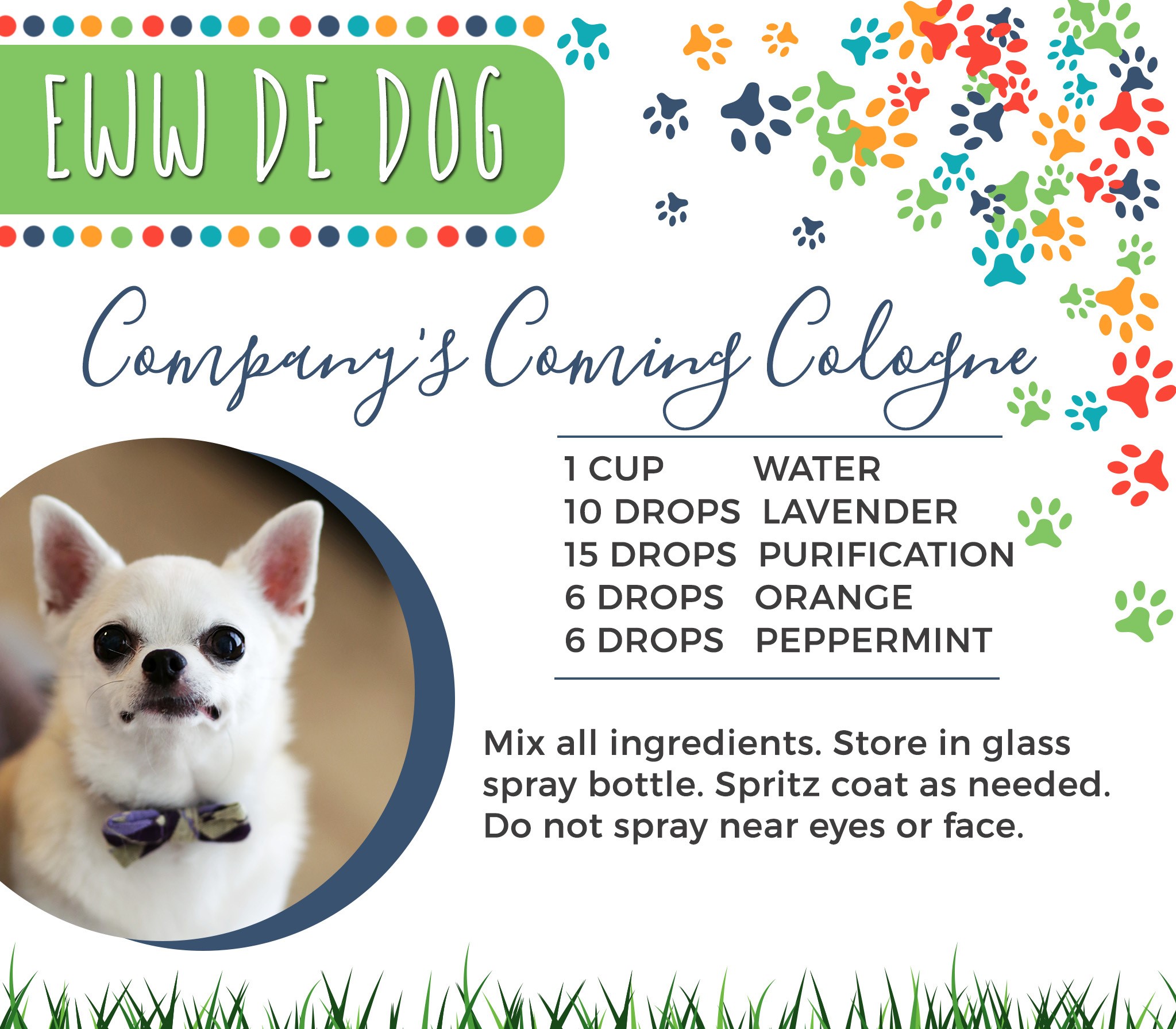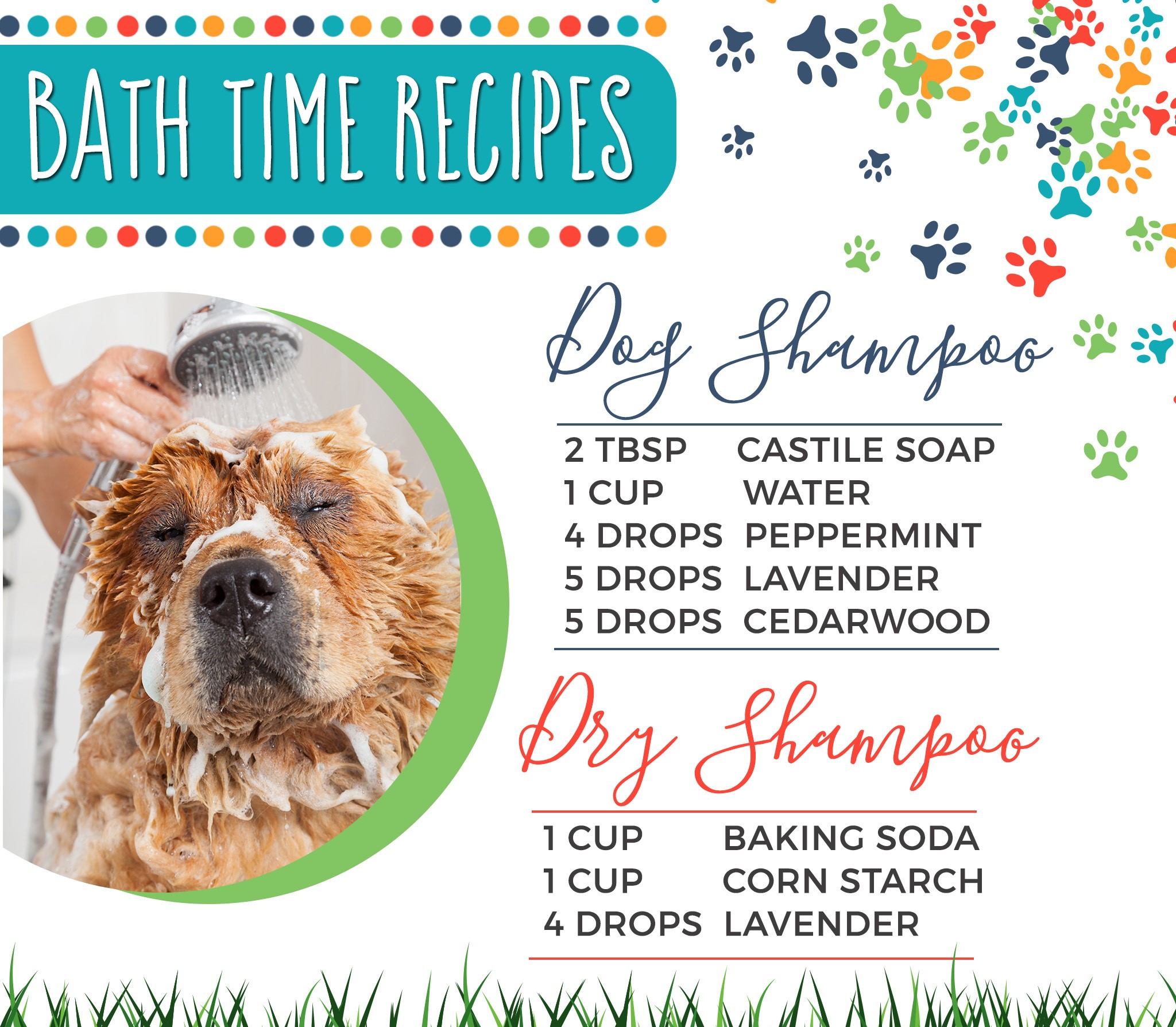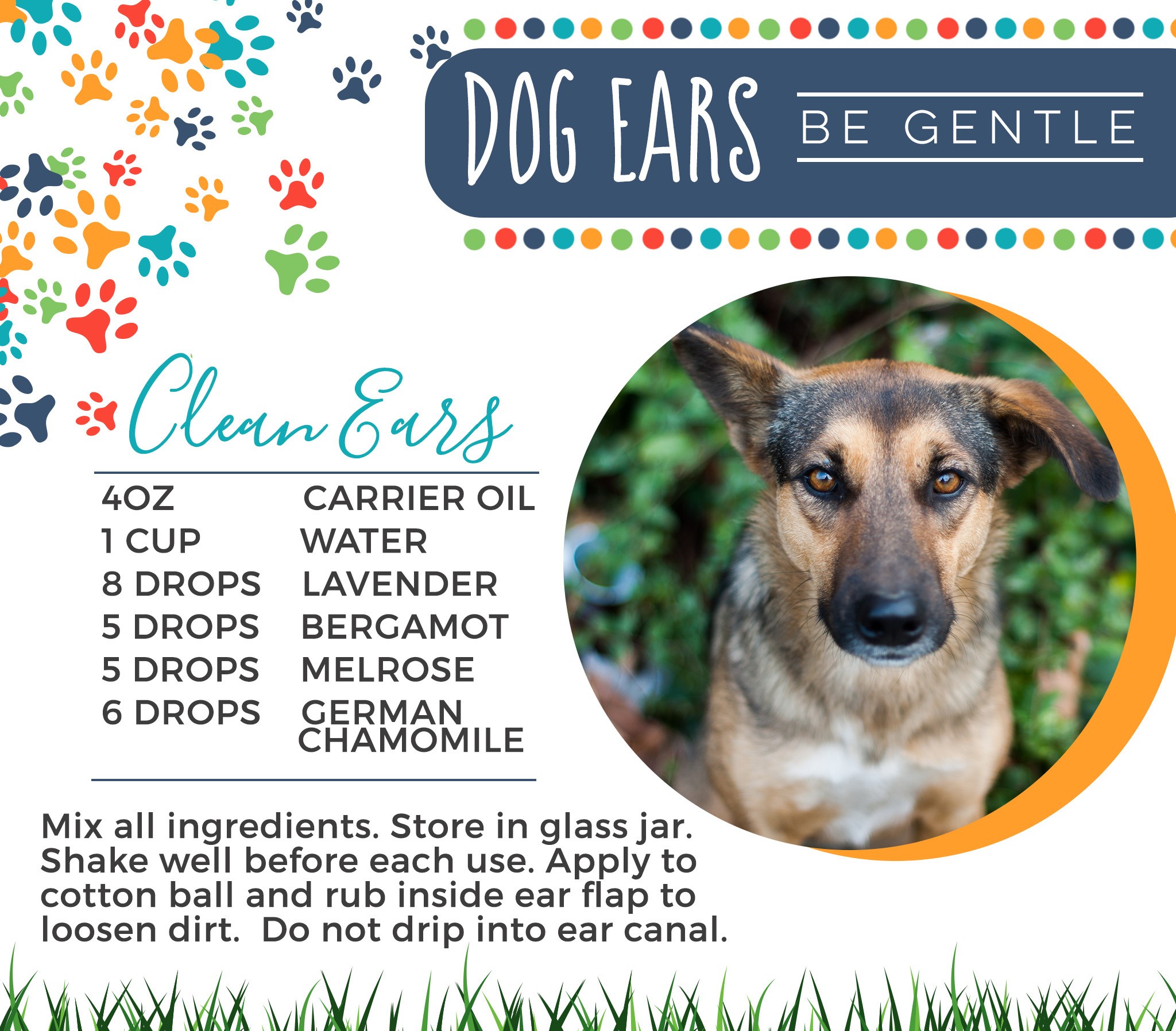Animals & Oils
Take a listen to animal professionals talk about how they use oils with their animals.
(3 minute video)
When we say that essential oils can be enjoyed by the whole family, that includes your cats and dogs.
There are just a few things that you need to keep in mind. Start small and use in moderation.
Do:
Dilute heavily with a carrier oil.
Start small and use in moderation.
Observe how the animal responds.
Care for each animal differently.
Don’t:
Don’t use oils near animals eyes, mouth, nose or sensitive areas.
Don’t use hot oils such as Wintergreen or Peppermint.
Don’t use high phenol oils such as Oregano, Clove & Thyme.
CATS & Young Living Essential Oils:
Start with 1 drop. Dilute with about a teaspoon of carrier oil like Coconut Oil. Apply to paws.
Diffuse in a room with door open so cat can leave if desired.
Avoid Citrus Oils.
Dogs & Young Living Essential OIls:
Start with 1–5 drop depending on the size of your dog. Dilute with about a teaspoon of carrier oil like Coconut oil. Apply to paws.
Diffuse in a room with door open so dog can leave if desired.
Horses & Young Living Essential Oils:
Start with the human usage amount found on the label and dilute with about a teaspoon of carrier oil like Coconut oil.
Mix with water in a spray bottle for easy application.
Class in Graphics

Welcome
"With pure essential oils, millions of pet owners can find successful relief for their pets where more conventional approaches have failed. The therapeutic potential for animals is enormous, and pet owners and pet health practitioners are just beginning to tap into this widely promising field. We believe the controversy relating to essential oils is due to the varying types that are on the market. Consumers have access to many options of adulterated oils with varying degrees of purity. In fact, most oils on the market are so impure that they can barely be used in dilution on humans without adverse reactions let alone pets of one tenth human mass. ”
– Essential Oils Animal Desk Reference 1st Edition
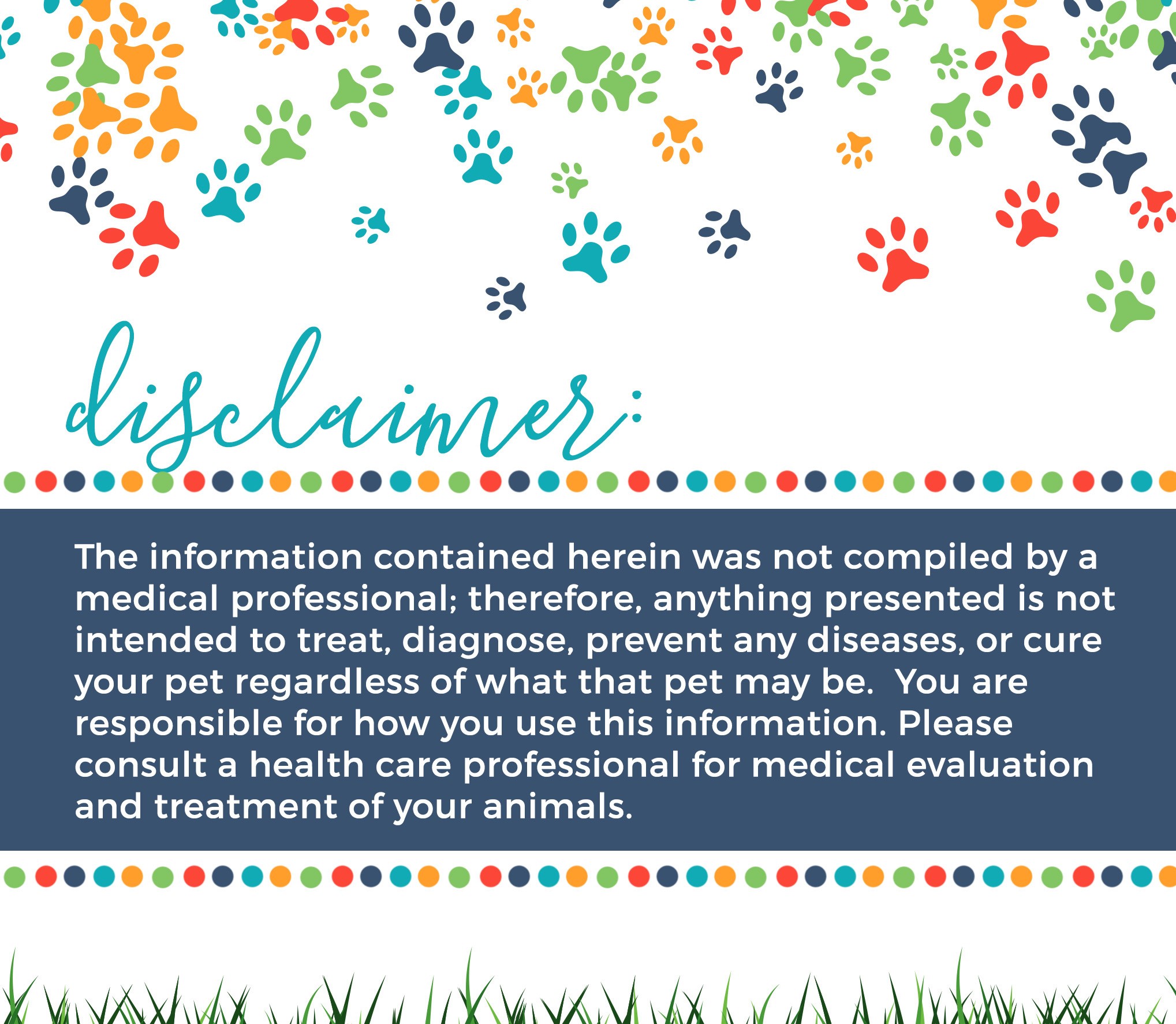
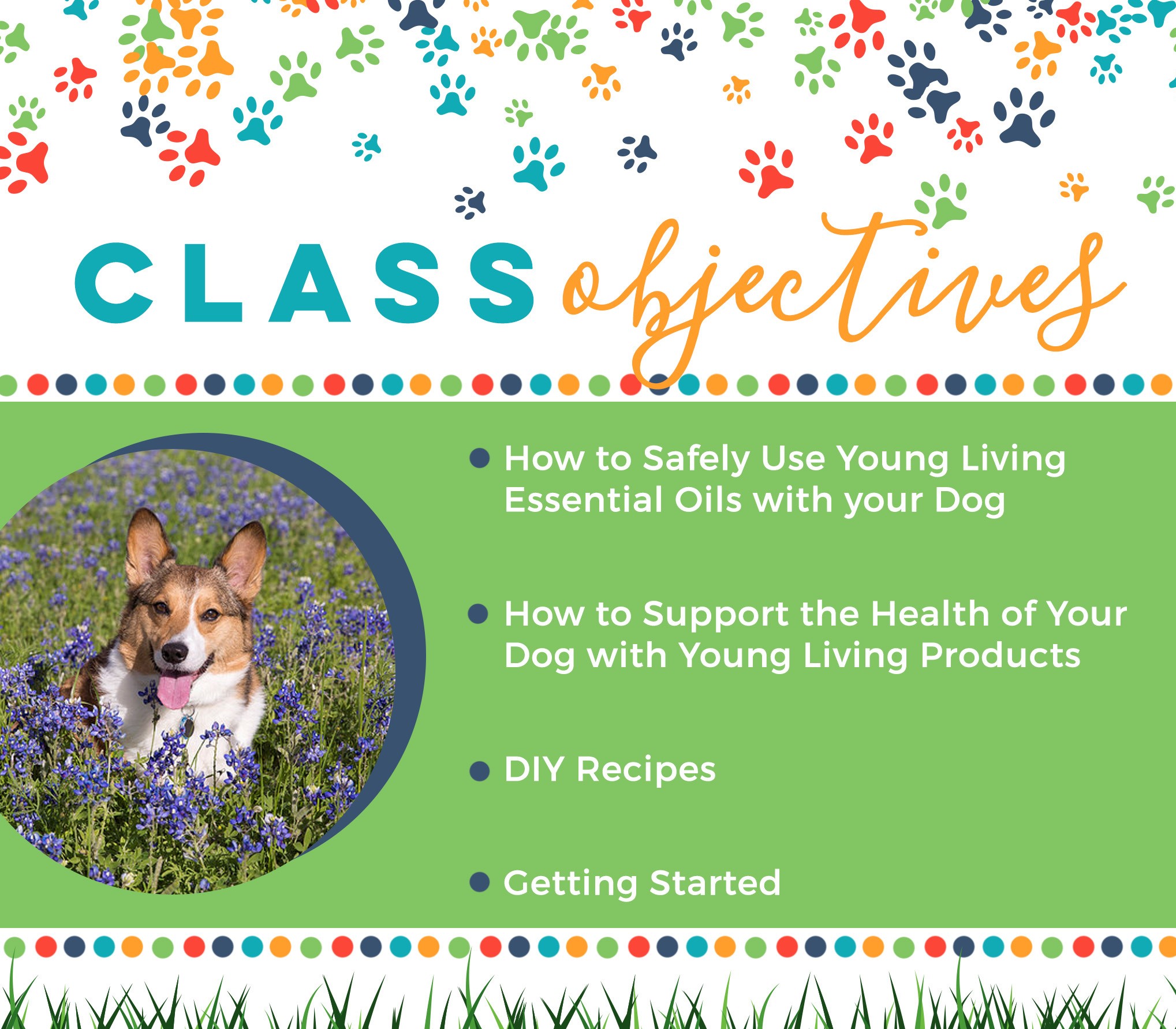
Which oils are safe to use? How much can I apply? Should I diffuse or apply topically? These are our most asked questions when it comes to using essential oils on our dogs!
Whether you’re a beginner or an expert, here are a few things to keep in mind:
* Most animals are more sensitive than humans to essential oils.
* Start by diluting heavily and use in moderation.
* Every animal is different, so carefully observe how each animal responds to the oils. Use common sense and good judgment as you try different methods.
* Take special care to not get essential oils in an animal’s eyes.
* Avoid using high-phenol oils such as Oregano and Thyme undiluted with any animal.
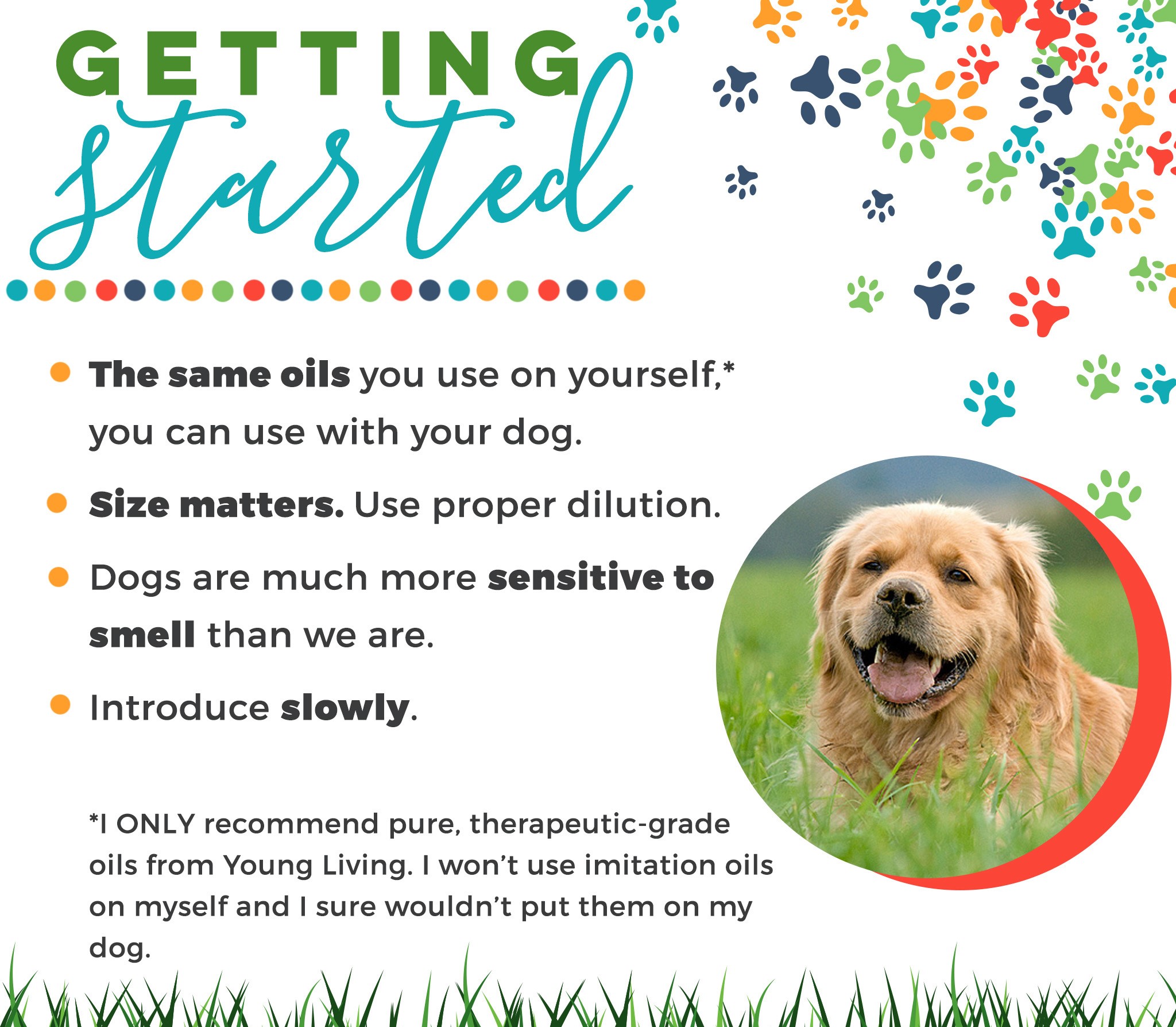
Getting Started
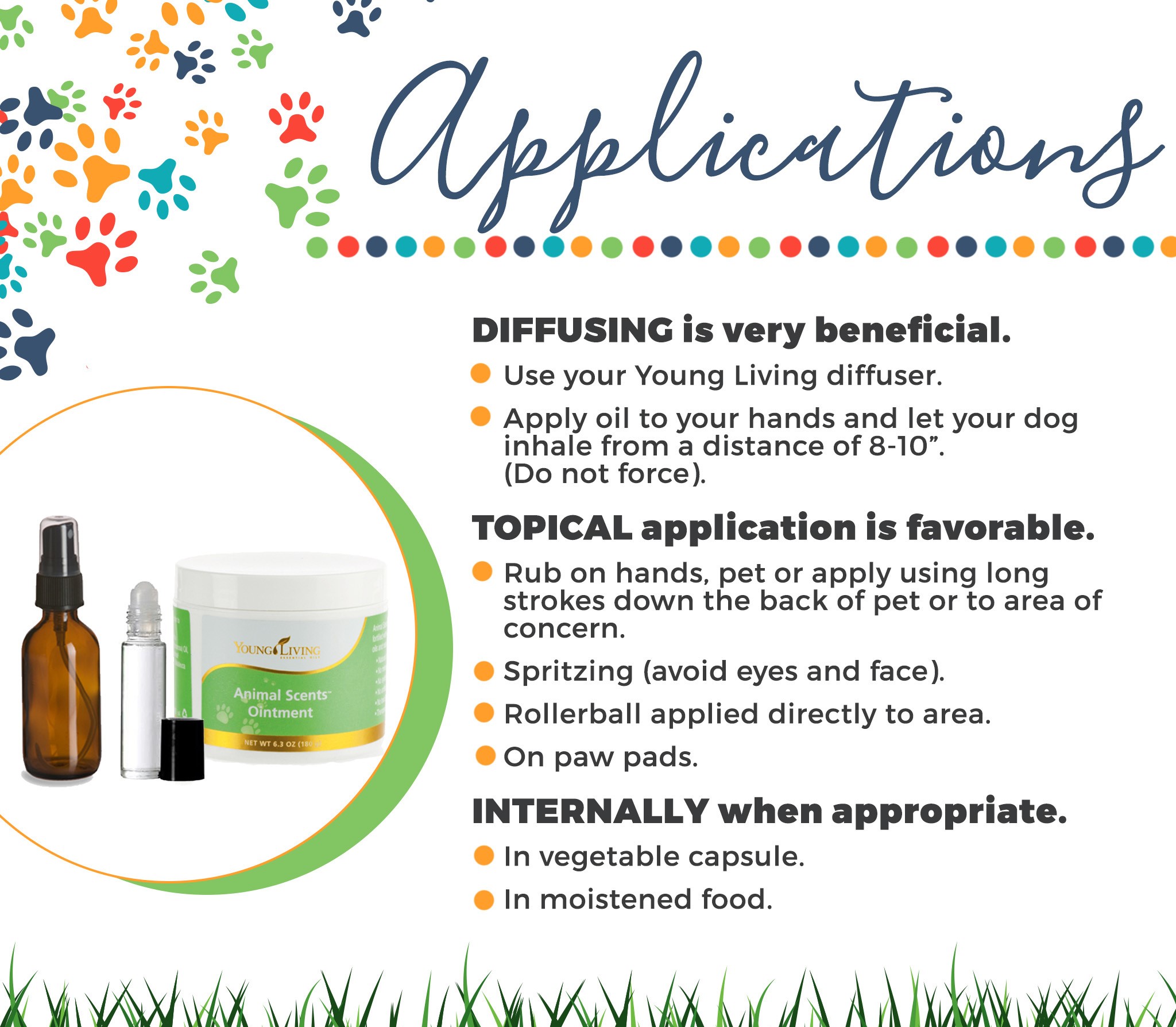
Application
* Apply oils to yourself or diffuse to introduce animals to essential oils and help them get comfortable.
* Wear oils around your animals, diffuse in their space, or apply to your hands and let the animal smell them.
* If your animal is jittery or resistant to essential oils, try applying an oil to yourself and staying near the animal for several minutes so it can get used to the aroma.
Once they’re used to essential oils, animals can respond well to topical application.
**** For dogs, on the top of paws are a great place to apply essential oils. Try rubbing oils onto your own hands and then stroking the animal’s fur. For large areas combine essential oils with V6 vegetable oil complex or water in a spray bottle for easier application.
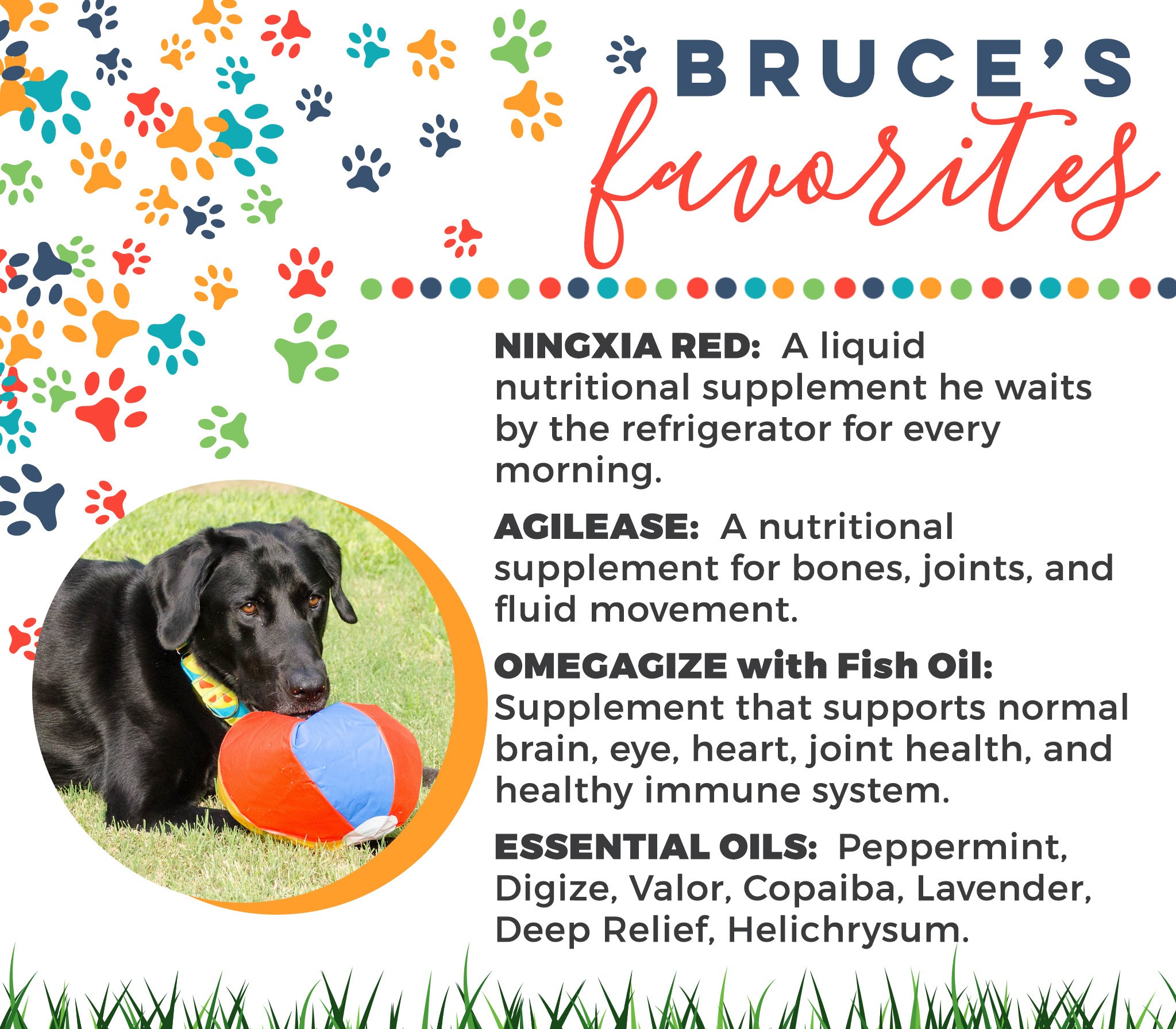
Some Favorites!
These supplements are also great for your dogs!
Ningxia Red is a nutrient-rich drink infused with antioxidant superfruits and powerful essential oils.
NingXia Red contains vital nutrients that may be missing in many modern diets. It’s the perfect way to start the day.
Blueberry, Aronia, Cherry, Pomegranate, Plum, Grape, and Ninxgia Wolfberry, Orange essential, Yuzu, Lemon, and Tangerine essential oils.
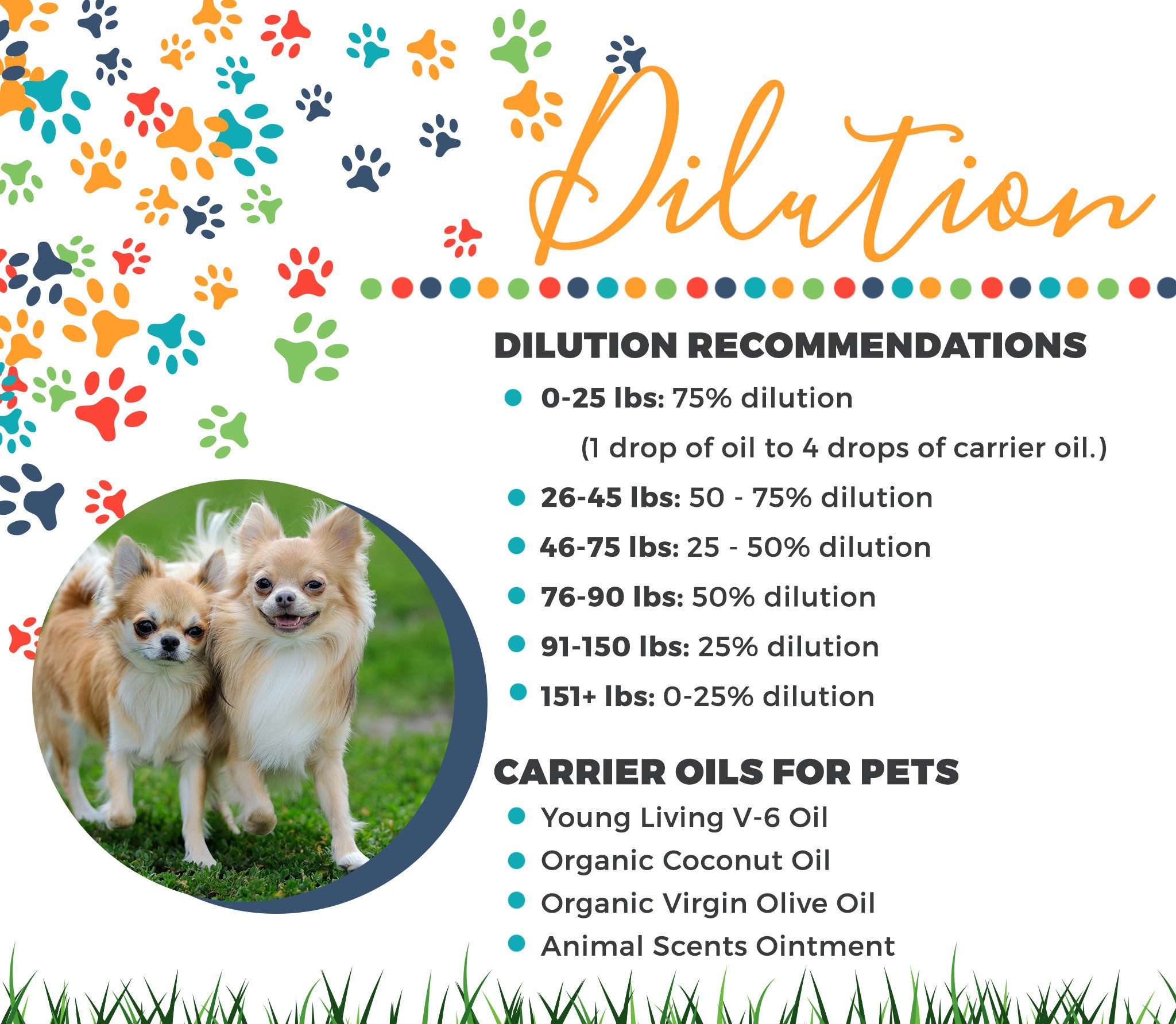
Your animal’s size affects the amount of oil you should use:
* For smaller dogs, use 3–5 drops. Be sure to dilute 80–90 percent prior to application (for example, for every 1 drop of oil, use 4–5 drops of a diluting agent, such as V-6™ Vegetable Oil Complex).
* For larger dogs, start with 3–5 drops. Unless otherwise indicated on the product label, dilution is unnecessary.

Copaiba
COPAIBA
We like to us thi son their sore spots or aches. Distilled from gum resin wild harvested from Brazilian copaiba tree.
•Copaiba contains the highest amounts of beta caryophyllene (55 percent) of any known essential oil.
*Diffuse or dilute and apply topically.

Frankincense

Young Living’s Lavender is registered as a NHP by Health Canada.
In Aromatherapy can be used topically:
• to help relieve joint or muscle pain associated with sprains, strains & rheumatoid arthritis
• or inhaled can act as a nervine and calmative which enhances relaxation
• or inhaled to reduce the symptoms of cold & cough
• when experiencing digestive discomfort can act as a carminative and antispasmodic
• to help relieve headache
Try applying topically when needed.
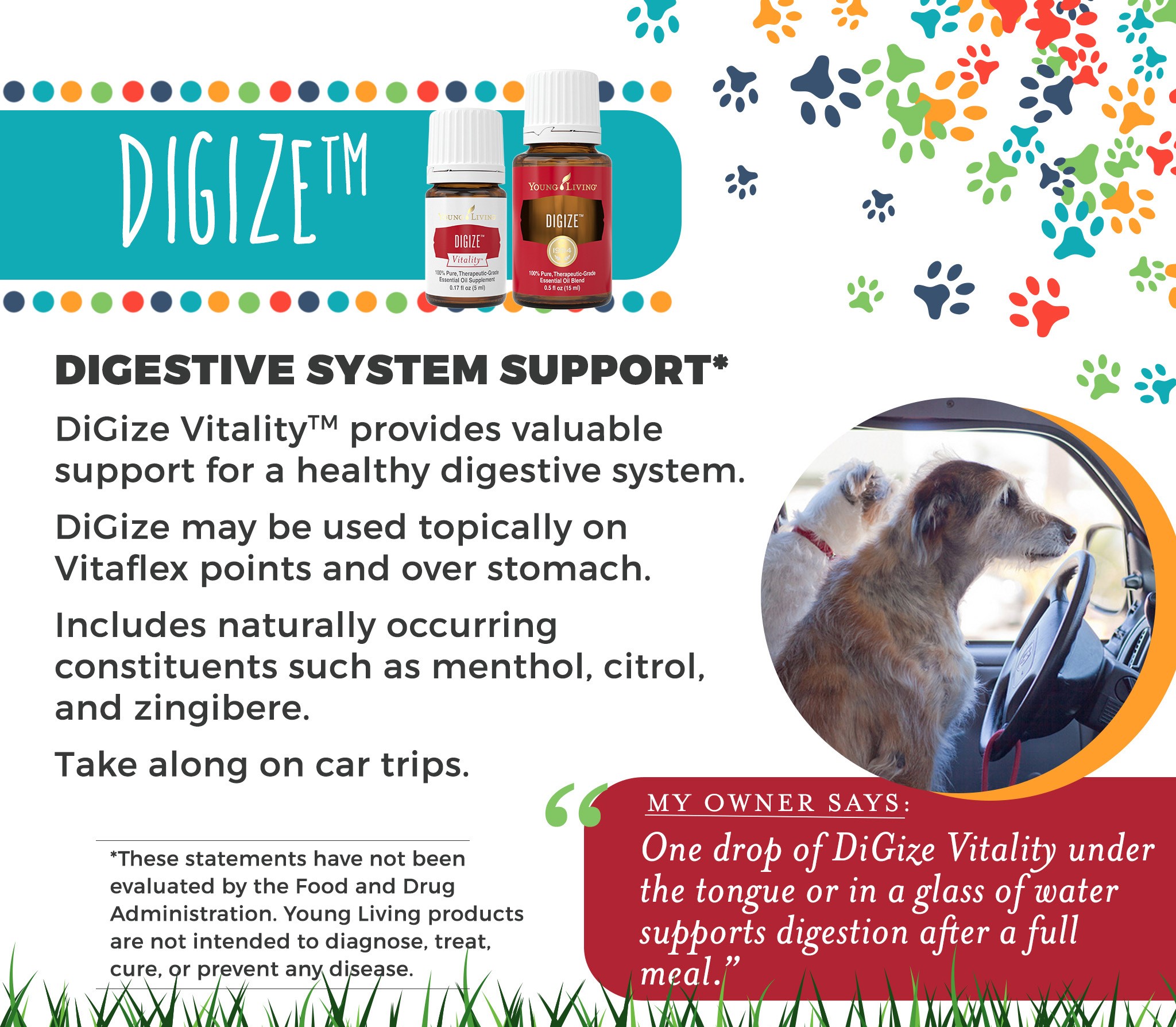
Digize
DIGIZE™ is a blend of pure tarragon, ginger, pepppermint, and other essential oils that may bring about calming feelings.
In Aromatherapy, can be used topically or inhaled:
As a carminative and antispasmodic for symptomatic relief of digestive discomfort
How to Use:
Diffuse, directly inhale, or dilute and apply topically.

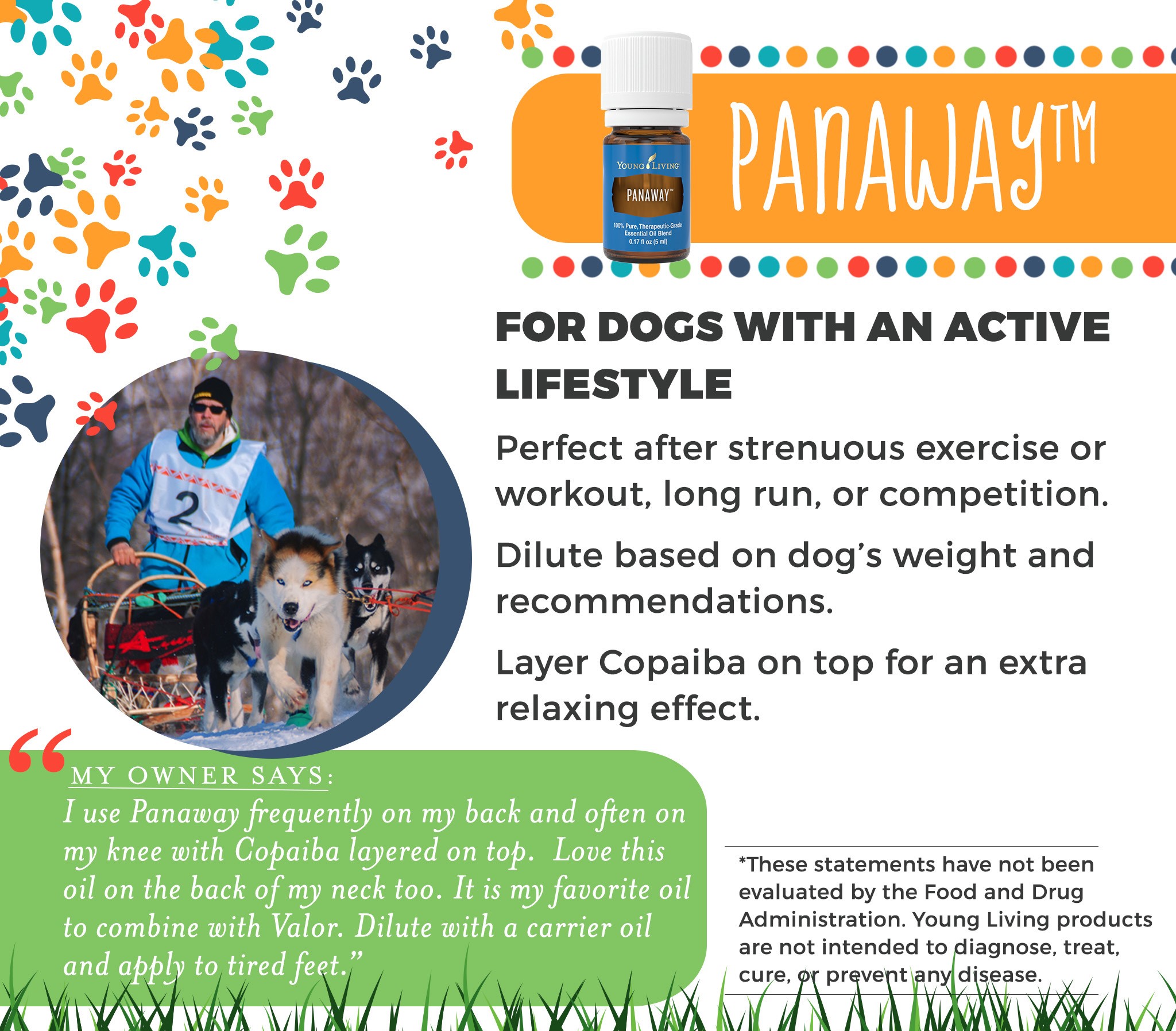

Purification
Removes unpleasant odors, such as wet doggy smell. Great in the summer months also to keep pesky outdoor flyers away.
Just add purification to a spray bottle with water and spritz.
The sweet refreshing scent of this blend instantly deodorizes unpleasant odors in the air.
Lemongrass, Rosemary, Melaleuca (M.alternifolia), Myrtle, Citronella



RC
We apply this essential oil blend on our dogs chest, stomach, and throat area when they sound congested or show signs of cough or cold.
R.C.™ is an invigorating blend of cypress, spruce, and three varieties of eucalyptus that is comforting when applied to the chest and throat.
Registered with Health Canada as a Natural Health Product..
